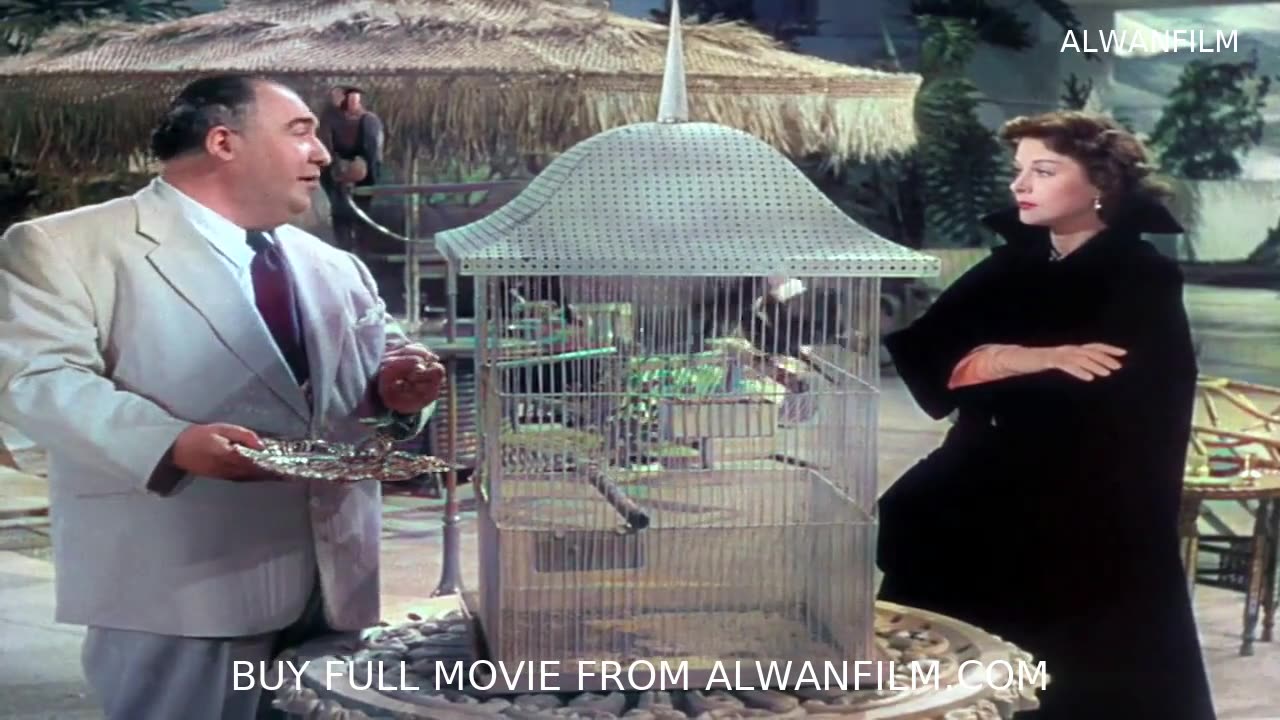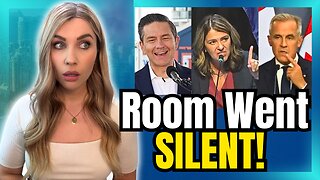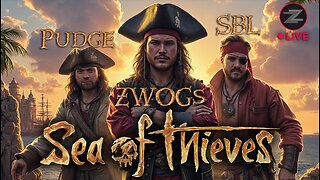Premium Only Content

My Favorite Spy Colorized
My Favorite Spy Colorized
Review: My Favorite Spy 1951 Colorized - A Classic Comedy Revisited
Introduction
In the annals of classic Hollywood cinema, few films capture the spirit of mid-20th-century comedy as effectively as "My Favorite Spy" (1951). Directed by Norman Z. McLeod and starring Bob Hope and Hedy Lamarr, this comedic gem combines espionage, romance, and humor in a delightful package. The film's recent re-release in an early colored version has reignited interest and debate among fans and critics. In this article, we explore the impact of colorization on "My Favorite Spy 1951" and discuss its significance in the context of film history.
Check The Full Colorized Movies List
Check Our YouTube Channel
Check Our Colorized Movies Trailer Channel
Understanding My Favorite Spy 1951 Colorized: Director, Cast, and Genre
"My Favorite Spy 1951" is the brainchild of Norman Z. McLeod, a director known for his work in comedy films. With a flair for timing and a knack for blending humor with narrative, McLeod brings a unique touch to this film. The cast features Bob Hope in the lead role as Peanuts White, a vaudeville performer who is thrust into a world of espionage. Opposite him is the enchanting Hedy Lamarr, who plays Lily Dalbray, a glamorous and mysterious figure.
The film is a quintessential example of the comedy genre of its time, characterized by witty dialogue, slapstick humor, and a plot that keeps audiences both amused and engaged. "My Favorite Spy" also incorporates elements of the spy thriller genre, creating a delightful hybrid that stands out in Hollywood's golden age.
Exploring the World of My Favorite Spy 1951 Colorized: Plot and Characters
"My Favorite Spy 1951" revolves around the adventures of Peanuts White, a vaudeville performer who bears an uncanny resemblance to international spy Eric Augustine. The plot thickens when Peanuts is recruited by government agents to impersonate Augustine and retrieve vital microfilm from the exotic locale of Tangier.
The film’s narrative is filled with comedic mishaps and thrilling escapades. Peanuts’ bumbling attempts to navigate the dangerous world of espionage provide ample humor, while his interactions with the alluring Lily Dalbray add a touch of romance. As Peanuts and Lily traverse a landscape filled with intrigue and danger, their chemistry and comedic timing keep the audience entertained from start to finish.
The Art of Film Colorization
Film colorization, the process of adding color to black and white footage, has long been a subject of contention within the cinematic community. While proponents argue that it revitalizes classic films for contemporary audiences, detractors raise concerns about its impact on the original artistic vision and historical authenticity.
Colorization involves meticulous attention to detail, as artists work to recreate the film’s visual palette while preserving its original mood and atmosphere. When executed skillfully, colorization can enhance the viewing experience, offering a new perspective on familiar scenes. However, it also carries the risk of altering the film’s intended aesthetic, potentially diminishing its historical and artistic value.
Early Colored Films: A Brief History
The emergence of early colored techniques in cinema marked a pivotal moment in the industry’s evolution, paving the way for future innovations in visual storytelling. From hand-painted frames to early experiments with tinting and toning, filmmakers have continuously pushed the boundaries of creativity and technology.
Early colored films offered audiences a glimpse into worlds previously unseen, expanding the possibilities of cinematic expression. From the vibrant hues of silent epics to the lush palettes of early Technicolor musicals, colorization opened up new avenues for storytelling and spectacle. However, it also presented challenges in terms of production costs, technical limitations, and artistic integrity.
My Favorite Spy 1951 and Its Early Colored Version
The decision to release "My Favorite Spy 1951" in a colorized format represents a bold artistic choice, inviting viewers to experience this classic comedy through a new lens. While purists may lament the alteration of the original black and white aesthetic, others find value in this reinterpretation, highlighting previously unseen details and nuances.
The early colored version of "My Favorite Spy 1951" offers a fresh perspective on the film’s visual storytelling, enriching the narrative with vibrant hues and atmospheric textures. From the bright lights of vaudeville to the exotic locales of Tangier, colorization adds another layer of depth to the film’s comedic and adventurous spirit.
The Debate Over Film Colorization
As with any controversial artistic endeavor, the colorization of classic films sparks heated debates within the film community. While some argue for preservation and fidelity to the director’s intent, others advocate for creative experimentation and accessibility to modern audiences. Ultimately, the debate underscores the complex interplay between tradition and innovation in cinema.
The controversy surrounding film colorization reflects broader tensions within the industry between preservation and progress. While purists may decry any deviation from the original black and white aesthetic, others see colorization as a means of breathing new life into classic films for contemporary viewers. As technology continues to advance, the boundaries between art and commerce become increasingly blurred, raising questions about the future of cinematic preservation and interpretation.
Examining My Favorite Spy 1951 as an Early Colored Film
Viewing "My Favorite Spy 1951" in its early colored incarnation offers a unique perspective on its visual storytelling prowess. From the vibrant hues of Tangier’s markets to the subtle nuances of character expression, colorization adds another layer of depth to the film’s narrative tapestry. However, it also raises questions about the balance between artistic reinterpretation and historical authenticity.
For some viewers, the early colored version of "My Favorite Spy 1951" may enhance their appreciation of this classic comedy, providing a fresh interpretation of familiar scenes and themes. For others, it may detract from the film’s original aesthetic and emotional impact, obscuring the charm and elegance of its black and white imagery. Ultimately, the decision to embrace or reject colorization is a matter of personal preference, reflecting the diverse perspectives within the cinematic community.
Influence and Legacy: My Favorite Spy 1951 Colorized's Impact on Cinema
Beyond its immediate impact, "My Favorite Spy 1951" has left an indelible mark on the cinematic landscape, inspiring generations of filmmakers and artists. From its influence on later spy comedies to its lasting legacy in the genre, the film continues to resonate with audiences worldwide.
The film’s blend of comedy and espionage has influenced numerous subsequent works, inspiring a subgenre of spy comedies that combine humor with thrilling adventure. Bob Hope’s comedic genius and Hedy Lamarr’s captivating presence have left an enduring legacy, solidifying "My Favorite Spy 1951" as a beloved classic.
Director's Cinematic Legacy: Beyond My Favorite Spy 1951 Colorized
Norman Z. McLeod’s cinematic legacy extends far beyond "My Favorite Spy 1951," encompassing a diverse body of work that spans several decades. Known for his contributions to comedy, McLeod’s films reflect a keen understanding of timing, character, and narrative.
From classics like "Horse Feathers" and "Topper" to his work with comedic legends such as the Marx Brothers and Danny Kaye, McLeod’s influence on the genre is profound. His ability to blend humor with heart has left an indelible mark on the world of cinema, inspiring generations of filmmakers to follow in his footsteps.
Themes Explored in My Favorite Spy 1951 Colorized
"My Favorite Spy 1951" explores themes of mistaken identity, love, and the clash between ordinary life and extraordinary circumstances. Through Peanuts White’s comedic misadventures, the film delves into the absurdity of espionage and the timeless appeal of romance and heroism.
The film’s humorous take on the world of spies and secret agents provides a lighthearted commentary on the genre, while its romantic subplot adds depth and charm. Through its witty dialogue and engaging characters, "My Favorite Spy 1951" offers a delightful exploration of the human experience, blending humor with adventure.
Reception and Controversy Surrounding My Favorite Spy 1951 Colorized
The release of "My Favorite Spy 1951" in its early colored version has sparked both acclaim and controversy among critics and audiences. While some praise the newfound vibrancy and depth, others lament the departure from the film’s original aesthetic. Nevertheless, the debate underscores the enduring relevance of this classic comedy in contemporary discourse.
Critics have praised the film’s visual beauty, thematic richness, and emotional resonance, hailing it as a towering achievement in cinematic art. However, others have raised concerns about the impact of colorization on the film’s integrity, arguing that it detracts from McLeod’s original vision.
Where to Watch My Favorite Spy 1951 Colorized Online
For those eager to experience the timeless brilliance of "My Favorite Spy 1951," the film is available on various streaming platforms, ensuring accessibility to audiences worldwide. Whether in its original black and white format or the early colored rendition, this classic comedy remains essential viewing for cinephiles and newcomers alike.
FAQs About My Favorite Spy 1951 Colorized
Common queries surrounding "My Favorite Spy 1951" range from its historical accuracy to its thematic resonance in modern times. By addressing these frequently asked questions, viewers can gain a deeper understanding of the film’s enduring appeal and cultural significance.
Q: Is "My Favorite Spy 1951" historically accurate?
A: While the film is set against a backdrop of Cold War espionage, it takes significant liberties with historical events and characters. The primary focus is on comedy and entertainment rather than strict historical accuracy.
Q: What is the significance of the film’s title?
A: The title "My Favorite Spy" is a playful nod to the film’s comedic take on the spy genre, emphasizing the protagonist’s unlikely transformation from vaudeville performer to international spy.
Q: What is the symbolism of the film’s imagery?
A: The imagery in "My Favorite Spy 1951" is rich with symbolic elements, reflecting the film’s blend of comedy and adventure. From the bustling markets of Tangier to the glamorous settings of international espionage, each scene contributes to the film’s lighthearted yet thrilling atmosphere.
Conclusion
In conclusion, "My Favorite Spy 1951" stands as a testament to the enduring power of classic Hollywood comedy. Its recent re-release in an early colored version offers a fresh perspective on this beloved film, inviting new audiences to experience its charm and humor. While debates over colorization continue, one thing remains clear: the timeless appeal of "My Favorite Spy 1951" lies in its witty dialogue, engaging characters, and delightful blend of comedy and adventure. As we continue to navigate the ever-evolving landscape of cinema, let us celebrate the enduring legacy of this classic film and its place in the pantheon of cinematic history.
-
 1:00
1:00
AlwanFilm
16 hours agoThe Westerner (1940) Colorized
6 -
 LIVE
LIVE
Geeks + Gamers
2 hours agoGeeks+Gamers Play- MARIO KART WORLD
241 watching -
![(8/27/2025) | SG Sits Down Again w/ Sam Anthony of [Your]News: Progress Reports on Securing "We The People" Citizen Journalism](https://1a-1791.com/video/fww1/d1/s8/6/G/L/3/c/GL3cz.0kob.1.jpg) 29:34
29:34
QNewsPatriot
3 hours ago(8/27/2025) | SG Sits Down Again w/ Sam Anthony of [Your]News: Progress Reports on Securing "We The People" Citizen Journalism
3.08K1 -
 25:12
25:12
Jasmin Laine
7 hours agoDanielle Smith’s EPIC Mic Drop Fact Check Leaves Crowd FROZEN—Poilievre FINISHES the Job
3.68K16 -
 LIVE
LIVE
ZWOGs
11 hours ago🔴LIVE IN 1440p! - SoT w/ Pudge & SBL, Ranch Sim w/ Maam & MadHouse, Warzone & More - Come Hang Out!
58 watching -
 LIVE
LIVE
This is the Ray Gaming
51 minutes agoI'm Coming Home Coming Home Tell The World... | Rumble Premium Creator
40 watching -
 LIVE
LIVE
GrimmHollywood
10 hours ago🔴LIVE • GRIMM HOLLYWOOD • GEARS OF WAR RELOADED CUSTOMS • BRRRAP PACK •
54 watching -
 1:13:28
1:13:28
Glenn Greenwald
4 hours agoGlenn Takes Your Questions on the Minneapolis School Shooting, MTG & Thomas Massie VS AIPAC, and More | SYSTEM UPDATE #506
99.4K46 -
 LIVE
LIVE
RCAM
1 hour agoLIVE | Trans Shooter Who Targeted Christians | Premium Creator
46 watching -
 LIVE
LIVE
Spartan
5 hours agoMaybe finishing Expedition 33, then back to Halo Grind
8 watching